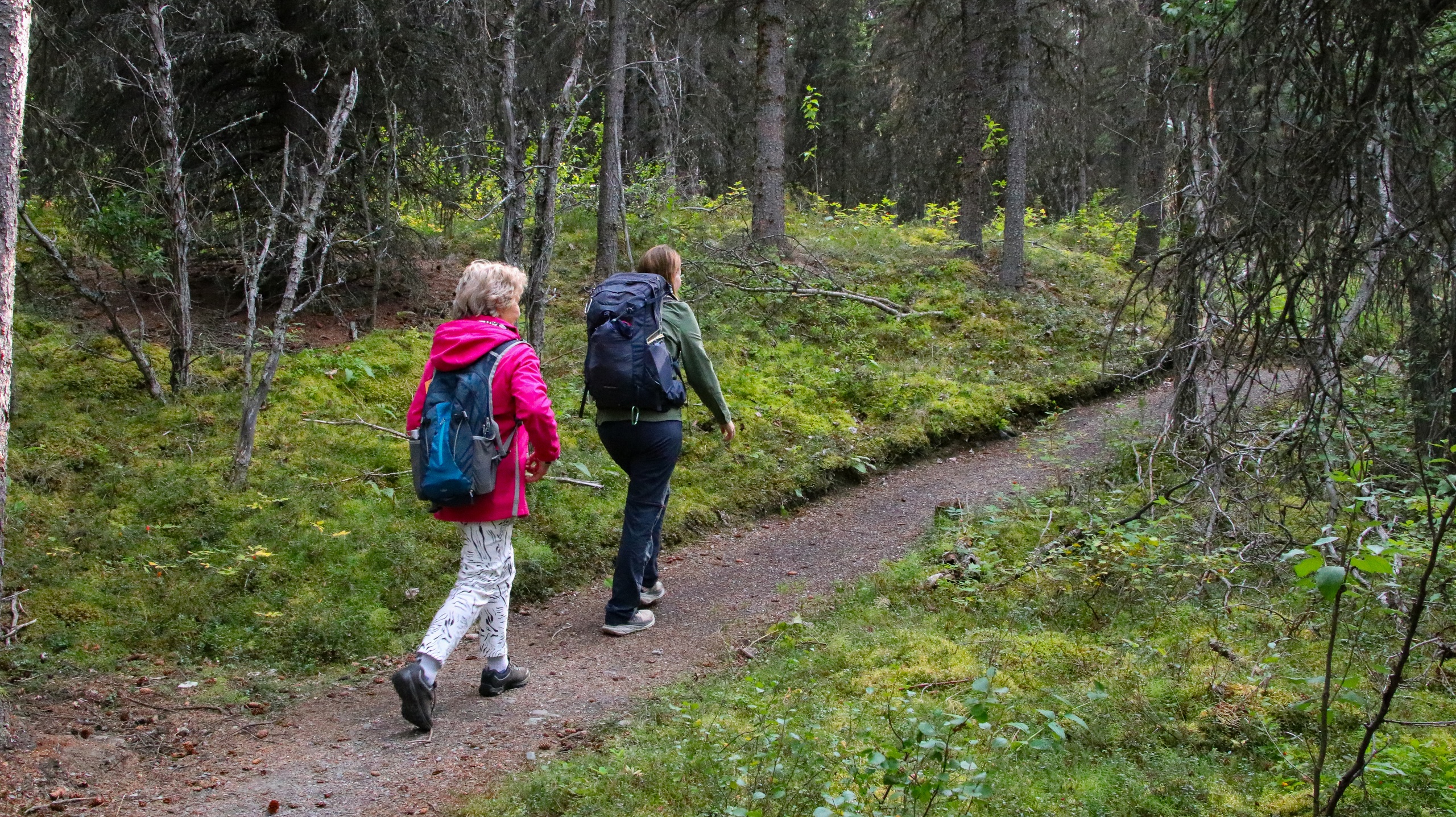Into the Wind at Hustai National Park: Tracking Mongolia’s Wild Horses
Sunrise ridges, rewilded horses, and the wind-whipped steppe—just 2 hours from Ulaanbaatar.
Dawn loosens its grip on the Mongolian steppe with a pale, pearly light, and the grass answers first—rippling in waves, shivering as if the wind has whispered a secret. A ranger eases the 4x4 to a stop below a low ridge, cutting the engine so the land can speak. Across the slope, tawny shapes resolve from the half-dark: stocky, sturdy, and watchful. The takhi—Przewalski’s horses—hold the horizon like sentinels, square muzzles dipping to graze, mealy noses gleaming with dew. They move together, a tight braid of muscle and instinct, the wild still written across their backs in a dark dorsal stripe. This is Hustai National Park (Khustain National Park), and the steppe is very much alive. Ninety-five kilometers west of Ulaanbaatar, Hustai is where Mongolia’s winds gather speed and history sits just beneath your boots. The park’s hills fold and refold like a rumpled blanket, their shoulders dotted with larch and birch. Granite knuckles punch through the tawny grass. The Tuul River slips along the park’s northern edge, shepherding willows and birdlife, daring you to follow it into the empty distance. Here, the horses are not a side note; they are the headline—a conservation story that rewrote itself in the nick of time. Once extinct in the wild, the takhi were reintroduced to Hustai in the 1990s from carefully managed European herds. By 2002, Hustai had become a UNESCO Man and the Biosphere Reserve, and today more than 300 takhi roam these ridges, along with red deer, marmots, foxes, and raptors that surf the thermals. The Mongolian word “takhi” is often translated as spirit or simply wild. Watch them long enough and the name fits—the horses keep their own counsel, wary but unafraid, deciding when to hold and when to flow like the moving weather. Most visitors peel off the main westbound highway from Ulaanbaatar and rattle down a final stretch of dirt to the gate, where ranger maps and a tidy visitor center set the tone: this is steppe country with rules. You’ll drive graded tracks to glass the valleys and then hike short ridges for better views, trading horsepower for footwork at the right moments. Expect 3–8 kilometers of walking in a day with 200–300 meters of cumulative elevation gain—nothing technical, but the wind has teeth and the sun doesn’t blink. Good boots and layers matter. Timing matters more. The steppe keeps its rhythm: dawn and dusk are when the horses come low to feed and foals bounce between mares like sparks. Midday, herds drift uphill to catch the breeze and shed flies. Rangers will nudge you to the right angles, scanning with practiced eyes for a flick of a black mane, a scatter of fresh dung, or a narrow path drawn by many hooves. Give the takhi their space—50 meters minimum—and read the signs. Ears pinned, heads high? Back off. You’re a guest in their house. Hustai is also a living archive. Near the entrance, the Ungut archaeological complex holds Turkic-era stone men and ancient burial mounds—time-stilled faces watching the same weather you feel on your cheeks. Mongolian horse culture hums in the background everywhere you go, from a herder’s motorcycle tracking the skyline to the taste of airag (fermented mare’s milk) offered at a ger camp. The straight line between domestic horse and takhi is a story told around fires, but the wild horse is its own chapter—stockier, with a thick neck and a mind tuned to the open. Geologically, the park sits at the hinge where forest-steppe meets arid plain. Rock ribs shrug from the turf, frost-split and seasoned by grit-laden winds. In spring, the ground breathes green; in summer, it hums with insects; in autumn, it goes gold like it means it; in winter, it pares down to the essentials—sky, wind, ice, and movement. Plan your day with those seasons in mind. Spring can be capricious—sun at breakfast, hail by lunch, a rainbow by dinner—yet you might see foals in late May, their legs all curiosity. Summer brings fast-building thunderstorms and heat that pushes wildlife to shade. Autumn is prime: crisp air, long sightlines, red deer bugling from drains at dusk, and horses moving confidently across a buffet of cured grasses. Winter is the quiet heartbreak, bitterly cold but arrestingly beautiful, with light that scours the ridges clean and herds sheltering on south-facing slopes. You can make Hustai a day trip from Ulaanbaatar, but it’s best unrushed. Sleep in a ger near the park boundary and let the night work on you. Coyotes yip? No—corsac foxes scrawl the dark, and the wind writes letters you can almost read. Wake before the light, grab your thermos, and follow a ranger out. Let the ridges pull you upward. The steppe will set the pace—long plains lull, sudden gullies snap you to attention. The wind may shove, the sun may insist, and the ground will ask for careful feet among marmot holes and loose stone. And when the horses appear again—perhaps with foals in tow, perhaps a bachelor band jousting with the flat of their teeth—keep still. The moment is the point. For the practical-minded, bring binoculars or a long lens; a 300mm will earn its keep. Pack water and a windproof layer even in summer. Expect spotty cell service beyond the main road and carry cash for park fees. A high-clearance vehicle is wise, especially after rain. Leave drones in the bag; they are restricted without permits and aren’t welcome near wildlife. Stick to established tracks to protect fragile soils and the short-grass communities that feed everything here. When you drive back toward the city, the steppe unspooling in your mirrors, the takhi will stay with you. Not as a trophy, but as a reminder that wild is a verb, not just a place. It persists when we give it room, when we believe in it enough to try. Hustai is proof: the wind asked a question, and the horses answered by coming home.
Trail Wisdom
Go at dawn or dusk
Takhi feed in lower valleys at first and last light; plan your hikes and drives for these windows to maximize sightings.
Keep a respectful distance
Stay at least 50 meters from wildlife and avoid cutting off a herd’s path; read ear and tail cues and give ground if they look alert.
Bring optics that matter
Binoculars (8x–10x) or a 300mm lens transform distant silhouettes into meaningful encounters without stressing the animals.
Prepare for wind and quick weather
A light windproof shell and sun hat go a long way; the steppe can flip from warm to biting gusts in minutes.
Local Knowledge
Hidden Gems
- •Ungut archaeological complex with Turkic stone men near the park entrance
- •Quiet sunrise ridge above the Tuul River bends for sweeping horse-spotting views
Wildlife
Przewalski’s horse (takhi), Red deer and Siberian marmot
Conservation Note
Stay on established tracks and keep your distance from herds; entry fees support ranger patrols and habitat protection in this fragile steppe ecosystem.
Takhi were reintroduced to Hustai beginning in 1992 after going extinct in the wild; the park became a UNESCO Biosphere Reserve in 2002.
Seasonal Guide
spring
Best for: Foal viewing in late May–June, Cool hiking temps
Challenges: High winds and dust, Unpredictable rain or hail
Green-up begins and wildlife becomes active; expect variable weather and excellent morning light.
summer
Best for: Long daylight hours, Lush grass and birdlife
Challenges: Heat and strong sun, Afternoon thunderstorms and insects
Warm days and sudden storms define the season—plan early starts and carry plenty of water.
fall
Best for: Takhi and red deer activity, Golden steppe landscapes
Challenges: Chilly mornings, Shortening daylight
Crisp air and clear views make this the standout season; dusk bugling adds drama to evening ridges.
winter
Best for: Crowd-free wildlife watching, Ethereal, low-angle light
Challenges: Extreme cold, Icy roads and limited services
A stark, beautiful quiet blankets the park; go with a guide and proper cold-weather gear.
Photographer's Notes
What to Bring
Binoculars (8x–10x)Essential
Spot herds at a distance and observe behavior without approaching too closely.
Windproof ShellEssential
The steppe’s constant breeze can chill quickly, especially on exposed ridges.
Sturdy Hiking ShoesEssential
Rolling hills and loose rock call for good traction and ankle support.
Telephoto Lens (300mm+)
For photographers, a long lens captures intimate wildlife moments from ethical distances.
Common Questions
How far is Hustai National Park from Ulaanbaatar?
About 95 km west; count on 1.5–2 hours by vehicle, including a final stretch of graded dirt road.
Do I need a guide to visit?
A guide isn’t strictly required, but local rangers and guides greatly increase your chances of sightings and help ensure responsible wildlife viewing.
When is the best time to see the takhi?
Dawn and dusk are most reliable year-round; autumn often offers the best visibility and activity.
Is the park suitable for regular cars?
A high-clearance vehicle is recommended, especially after rain or in winter; 4x4 provides safer access to interior tracks.
Can I use a drone in the park?
Drones are restricted and generally require special permits; they should never be flown near wildlife.
Can I stay overnight nearby?
Yes. Ger camps near the entrance offer simple lodging and meals, making dawn and dusk outings easy.
What to Pack
Sun hat and SPF for relentless steppe sun; windproof layer for exposed ridgelines; binoculars for ethical, close-feeling views; cash for park fees and tips where cards aren’t accepted.
Did You Know
Przewalski’s horses are the world’s last truly wild horse, distinct from domestic horses and carrying 66 chromosomes compared to 64 in domesticated breeds.
Quick Travel Tips
Start early from Ulaanbaatar to reach prime dawn light; book a local ranger-guide at the gate for current herd locations; bring extra water as services are limited inside the park; download offline maps—cell service is inconsistent.
Local Flavor
Pair your steppe day with a night in a ger camp near the gate—simple meals, stars for company, and a chance to try airag. Back in Ulaanbaatar, celebrate with dumplings (buuz) at Modern Nomads or slow-cooked khorkhog, then sample local craft beer at MB Beer Factory. For context, stop by the National Museum of Mongolia to trace the deep roots of horse culture before you go.
Logistics Snapshot
Closest airport: Chinggis Khaan International (UBN), Ulaanbaatar. Trailhead/access: Park gate via A0301 westbound, then ~20–25 km of dirt road. Drive time: 1.5–2 hours from central Ulaanbaatar. Cell service: Spotty to none beyond main roads. Permits/fees: Park entry fee payable at the gate (cash recommended); drones require permits; stay on marked tracks.
Sustainability Note
Hustai is a UNESCO Biosphere Reserve and a flagship rewilding site for the takhi. Travel on existing roads, keep respectful wildlife distances, and pack out all waste to protect delicate steppe soils and forage.
Continue Reading

Canyon Wave: Rafting Denali’s Glacial Heart on the Nenana River
The Nenana River doesn’t whisper—it urges you forward. On the Canyon Wave run, you’ll punch through crisp, glacial rapids beneath Denali’s ramparts, trading roadside views for a front-row seat to Alaska’s wild hydraulics. Cold water, big smiles, and a canyon that knows how to keep pace.
Healy, Alaska

Chasing Light in Denali: An Afternoon Hike Across Taiga and Tundra
Trade the tour bus for tundra. This guided afternoon hike threads from shadowed spruce to open ridgeline, where Denali’s valleys breathe wide and the wind calls the cadence. Come for the views, stay for the stories beneath your boots.
Denali Park, Alaska

